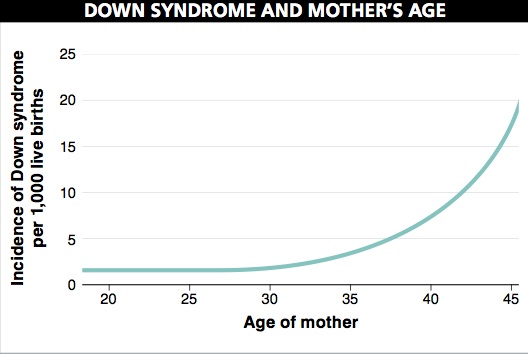
Chapter 6. Chapter 6 Graphic Content
Introduction

Instructions
Review the information provided in the graph to answer each question below.
After submitting your answer, you will be provided feedback to check if your response is correct.
(This activity contains 5 questions.)
1.

1. According to this graph, what is the probability (i.e., 1 in 800, or 1 in 256, etc.) that a baby born to a 35-year-old woman will have Down syndrome?
2.

2. Is a woman of age 45 who gives birth more likely than not to have a baby with Down syndrome? What is the exact probability that her baby will not have Down syndrome?
3.

3. From this graph, can you conclude that most babies with Down syndrome are born to women older than 35?
4.

4. Can you determine from the graph what the chances of having a baby born with Down syndrome is after age 45? What factors might have been responsible for the graph not showing data for women older than 45?
5.

5. Among woman aged 35 and older only, the incidence of fetuses produced that have an extra copy of chromosome 21 may be higher than the graph indicates. Why?
Activity results are being submitted...